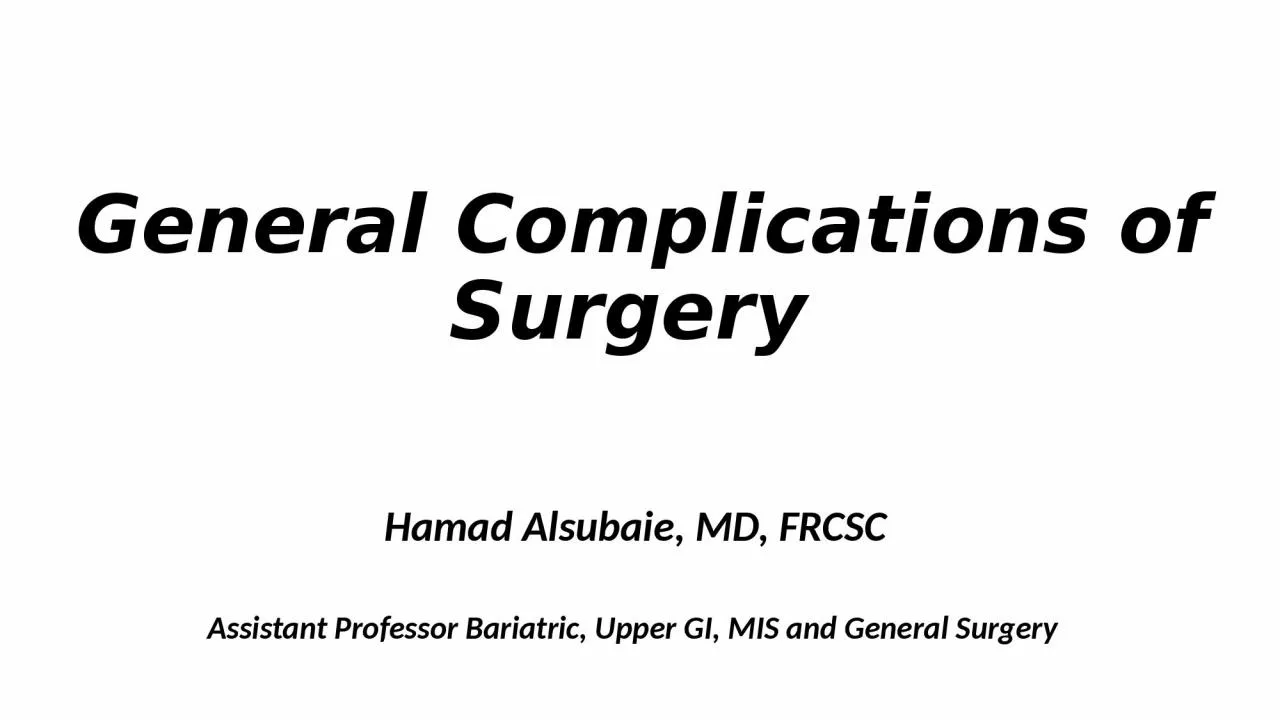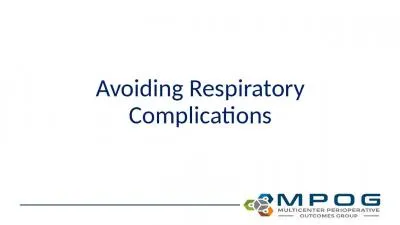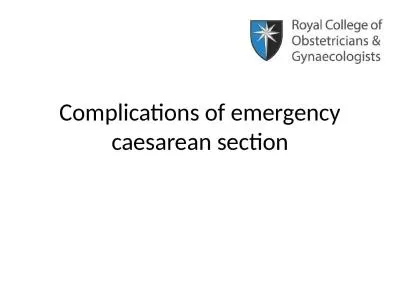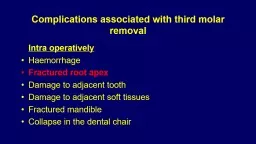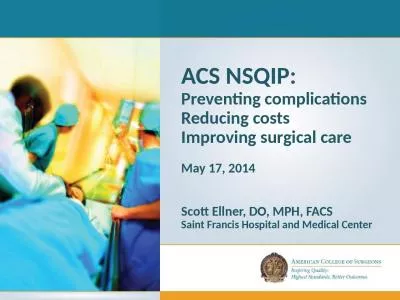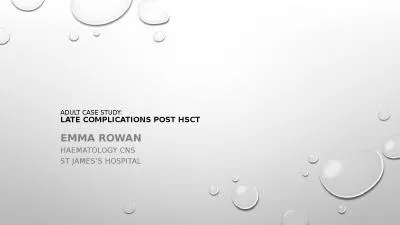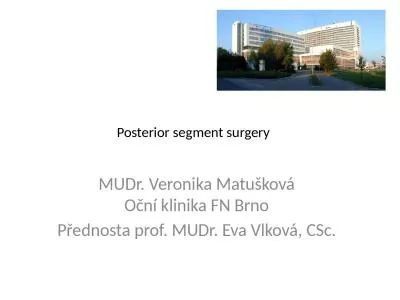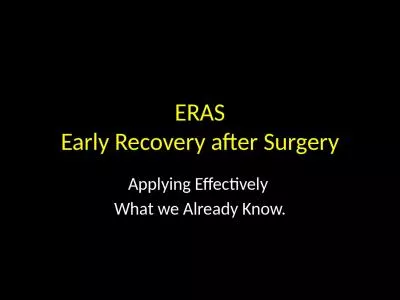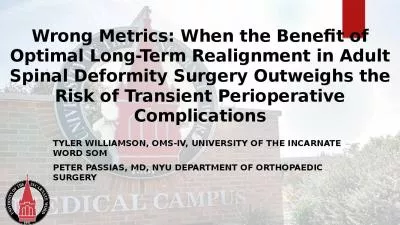PPT-General Complications of Surgery
Author : piper | Published Date : 2024-02-03
Hamad Alsubaie MD FRCSC Assistant Professor Bariatric Upper GI MIS and General Surgery Airway Obstruction Obstruction by the tongue may occur with a depressed
Presentation Embed Code
Download Presentation
Download Presentation The PPT/PDF document "General Complications of Surgery" is the property of its rightful owner. Permission is granted to download and print the materials on this website for personal, non-commercial use only, and to display it on your personal computer provided you do not modify the materials and that you retain all copyright notices contained in the materials. By downloading content from our website, you accept the terms of this agreement.
General Complications of Surgery: Transcript
Download Rules Of Document
"General Complications of Surgery"The content belongs to its owner. You may download and print it for personal use, without modification, and keep all copyright notices. By downloading, you agree to these terms.
Related Documents

